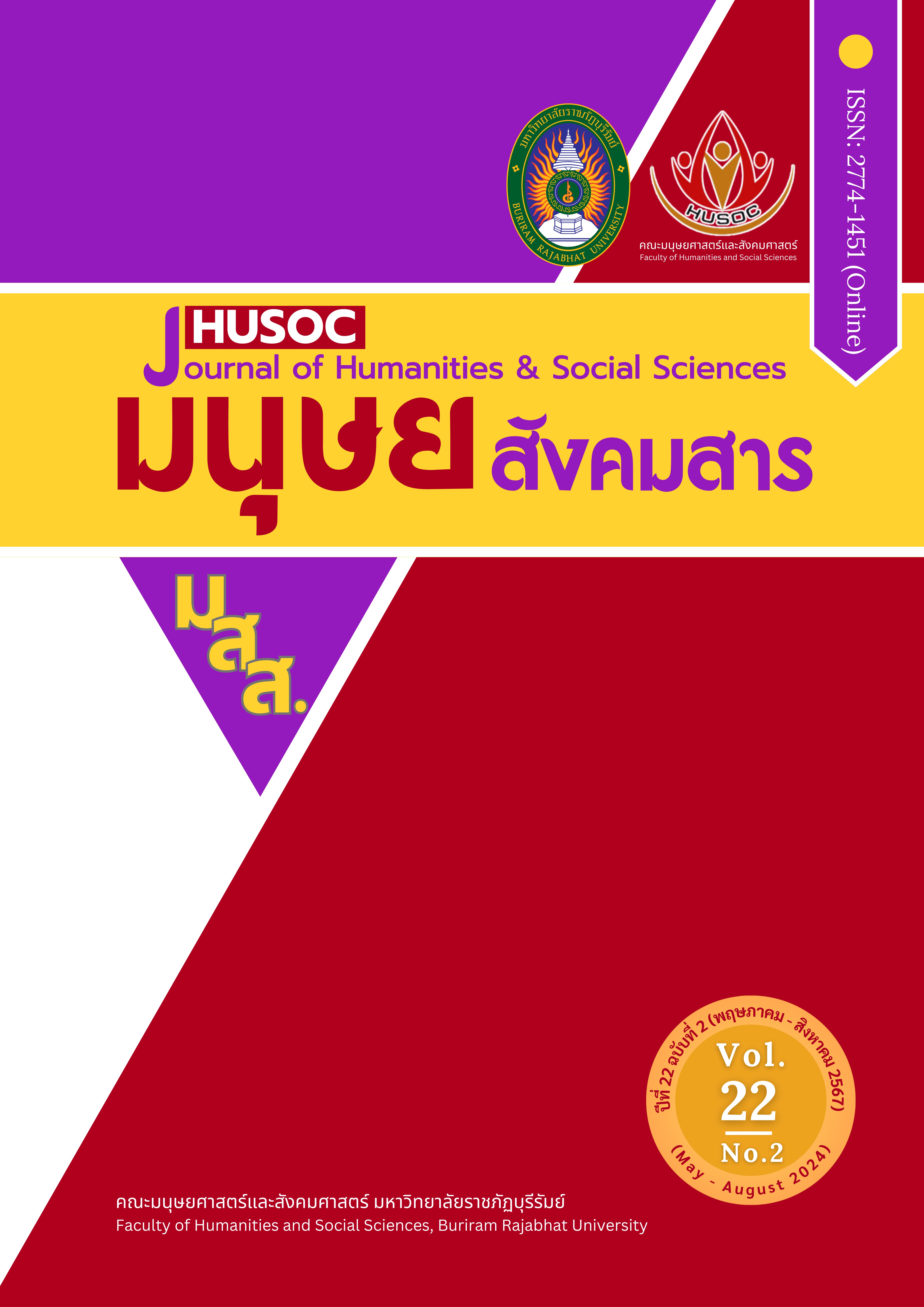Communication for Participation of Worship Dancers for Thao Suranaree, Nakhon Ratchasima Province
Main Article Content
บทคัดย่อ
The Thao Suranari worship dance is an important activity of Nakhon Ratchasima Province to honor Thao Suranari's heroic deeds. This article is part of the research on “Studying the communication network of worship dancers for Thao Suranaree, Nakhon Ratchasima Province”. This is qualitative research, that aims to study communication for the participation of worship dancers. The results showed that the model of communication is as follows: The messenger (Sender) is the dancing lady of Thao Suranaree. Content (Message) is lyrics, dance moves, melodies, and music. Media (Channel/Media) is a dance to worship Thao Suranaree. And receivers are members who attend the ceremony. The communication process consists of three steps as follows: 1) The planning stage with all relevant parties to prepare for worship dances held annually on Victory Day celebrations from March 23 to April 3. 2) The dance practice stage may be practiced in one's own community or practiced in a centralized location and time by planning a trip with a group of friends or separately to rehearse as convenient. And 3) in the inspection and evaluation stage, each year's dance rehearsal has been adjusted to dance moves, lyrics, locations, and dance schedules as appropriate for the situation.
Article Details

อนุญาตภายใต้เงื่อนไข Creative Commons Attribution-NonCommercial 4.0 International License.
เนื้อหาและข้อมูลในบทความที่ลงตีพิมพ์ในวารสารทดสอบระบบ ThaiJo2 ถือเป็นข้อคิดเห็นและความรับผิดชอบของผู้เขียนบทความโดยตรงซึ่งกองบรรณาธิการวารสาร ไม่จำเป็นต้องเห็นด้วย หรือร่วมรับผิดชอบใดๆ
บทความ ข้อมูล เนื้อหา รูปภาพ ฯลฯ ที่ได้รับการตีพิมพ์ในวารสารทดสอบระบบ ThaiJo2 ถือเป็นลิขสิทธิ์ของวารสารทดสอบระบบ ThaiJo2 หากบุคคลหรือหน่วยงานใดต้องการนำทั้งหมดหรือส่วนหนึ่งส่วนใดไปเผยแพร่ต่อหรือเพื่อกระทำการใดๆ จะต้องได้รับอนุญาตเป็นลายลักอักษรจากวารสารทดสอบระบบ ThaiJo2 ก่อนเท่านั้น
เอกสารอ้างอิง
Chaiala, P., & Ruengroj, S. (2013). Participatory communication management: A mechanism for the implementation of the alternative development paradigm. Humanities and Social Sciences, 30(2), 23-42. [in Thai]
Chanama, C. (2020). Thao Suranaree worship dance: Background and cultural context of performance. Journal of Suan Sunandha Arts and Culture, 1(1), 69-86. [in Thai]
Chantamala, O. (2015). Some traditions and identities reflected in dancing performances for worshipping religious places in Northeast Thailand: Rabam Champasi. Journal of Humanities and Social Sciences Mahasarakham Universiy, 34(1), 232-237. [in Thai]
Chomphon, A. (2020). The commodification of culture: A case study of sacrificial dance prince Prajak Silapakhom Udon Thani Province. Faculty of Economics Chulalongkorn University. [in Thai]
Kaewthep, K. (2000). Media for the community: Compilation of knowledge. The Research Fund Office. [in Thai]
Kaewthep, K. (2010). Communication in ritual, Ritual in communication. Journal of Management Science Chiangrai Rajabhat University, 5(1), 1-26. [in Thai]
Kasemsuk, C. (2011). Communicating with social changes. Chulalongkorn University Press. [in Thai]
Pengprang, K., & Kaewthep, K. (2005). Engaging communication: From idea to practice. Journal of Communication Arts, 23(3-4), 62-81. [in Thai]
Phuphraingam, S. (2022). Status of performances rituals: Dance in sacrifice ceremony of Chao Poh Sri Thep. Journal of Man and Society, 6(1), 1-23. [in Thai]
Srisura, S., Vannalee, C., & Ruengrong, A. (2023). Dance patterns in Pleng Na Pat Sathukarn in the Royal worship of Phra Siam Devadhiraj. Journal of Thithat Watthanatham, 22(1), 40-61. [in Thai]


